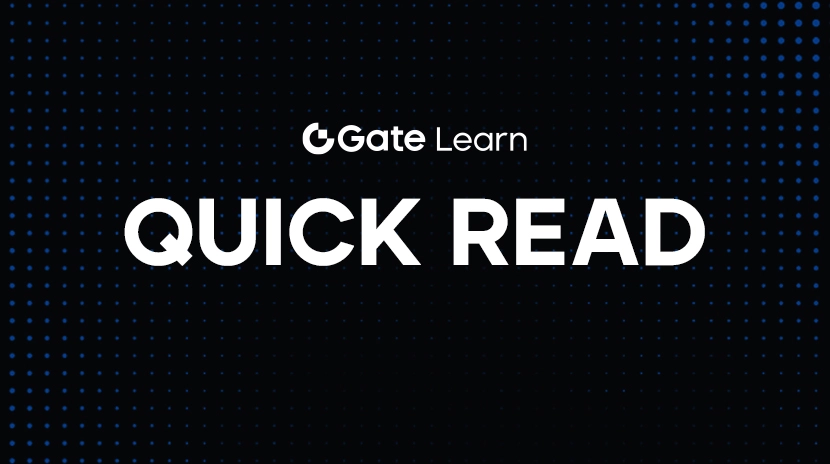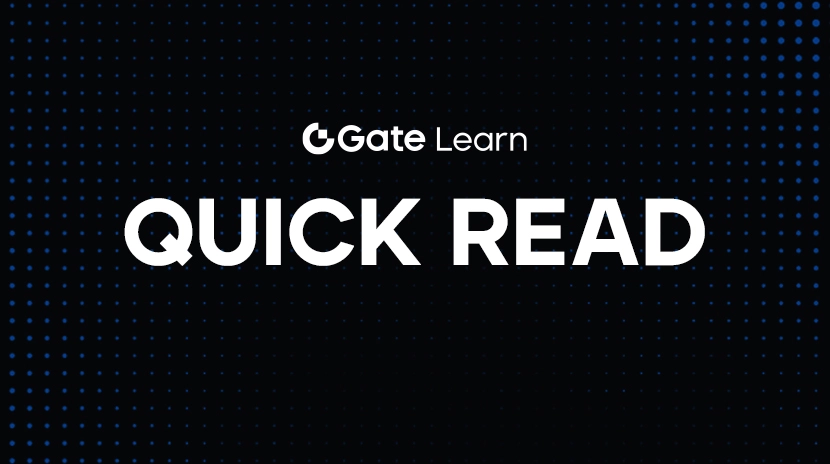Що таке OPCAT: новий фронтір Біткойн смартконтрактів та токенів
Що таке OPCAT?
Токен OPCAT - перший CAT20-токен, розгорнутий на Fractal Bitcoin, який базується на протоколі Covenant Attested Token (CAT), новому протоколі токенів на базі UTXO, запропонованому на Bitcoin. Його народження випливає з необхідності вдосконалення існуючих протоколів токенів Bitcoin з метою вирішення проблем, таких як залежність від індексаторів та одної функціональності. Протокол CAT був запропонований групою розробників, присвячених інноваціям у технології блокчейну, і поступово дозрівав завдяки постійним дослідженням та тестуванню. З появою Fractal Bitcoin OPCAT, як перший CAT20-токен, розгорнутий на ньому, відкрив нову подорож, використовуючи можливості Fractal Bitcoin та опкоду OP_CAT для розширення функціональності розумних контрактів Bitcoin в нові горизонти.
У вересні 2024 року було офіційно запущено перший токен CAT20 OPCAT на основі OP_CAT для виготовлення, тимчасово підталкуючи газ мережі Fractal до приблизно 5000sats/vB. Ось посібник з маркування токенів OPCAT.
- Налаштування середовища: Встановіть необхідні залежності, включаючи Git, Node.js та Docker, та завантажте відповідний код протоколу CAT.
- Запустіть контейнер Docker: запустіть повний вузол Fractal на сервері та налаштуйте локальний індексатор.
- Побудуйте та встановіть інструменти командного рядка.
- Створіть гаманець та завершіть процес створення та розгортання.
Для ознайомлення з конкретними операціями ви можете звернутися до статті.https://mirror.xyz/3p-labs.eth/0IWdR6toFMACCRZTwTAF3XFAv2TiEAPEAHqzVF707g8
Протокол OP_CAT
OP_CAT - це код операції в скрипті Bitcoin, який використовується для об'єднання двох фрагментів даних у стеку в більший елемент. Хоча його функціональність здається простою, він може надати більше можливостей для смарт-контрактів у мережі Bitcoin, дозволяючи розробникам створювати та обробляти складніші дані та логіку транзакцій. Однак через проблеми з безпекою код операції OP_CAT був відключений у 2010 році. З розширенням мережі Bitcoin спільнота відновила свою увагу до OP_CAT, вважаючи, що вона може відігравати ключову роль у масштабованості та смарт-контрактах. Останніми роками все частіше ведуться дискусії про повторне впровадження OP_CAT, особливо з точки зору його потенційного застосування в масштабованості Bitcoin і Tapscript. У жовтні 2023 року широкої уваги привернула пропозиція розробників Ітана Хейлмана та Арміна Сабурі відновити OP_CAT за допомогою софтфорка. Пропозиція спрямована на покращення функціональності біткойн-скриптів, підтримку більш складних реалізацій контрактів, а також вирішення проблем безпеки та використання пам'яті.
Огляд фрактального Біткойну
Під час розробки Біткойну зростання обсягу транзакцій в мережі призвело до проблем масштабованості, таких як збільшення часу підтвердження транзакцій та вищі комісії. Хоча спільнота вивчила рішення другого рівня, такі як мережа Lightning, ці рішення часто потребують додаткової інфраструктури або складних операцій. У цьому контексті команда UniSat запропонувала концепцію Фрактального Біткойну з метою створення розширюваного рішення, яке може безперешкодно інтегруватися в екосистему Біткойну без значних модифікацій основного протоколу Біткойну, при цьому значно покращуючи мережеву продуктивність. Фрактальний Біткойн вводить нову модель UTXO, яка дозволяє смартконтрактам працювати більш ефективно. Це відкриває шлях для розробки та впровадження децентралізованих додатків, забезпечуючи при цьому безпеку та стабільність мережі Біткойн.
Особливості та переваги OP_CAT
OP_CAT має ряд вражаючих функцій і переваг. Він підтримує взаємозамінні токени (стандарт CAT20) і невзаємозамінні токени (стандарт CAT721), задовольняючи різноманітні потреби в різних сценаріях. З точки зору правил карбування, OPCAT має високу програмованість, що дозволяє емітентам токенів гнучко визначати різні правила карбування за допомогою смарт-контрактів, включаючи відкритий карбування, і мережа безпосередньо відхилятиме транзакції, які перевищують ліміт карбування, забезпечуючи раціональність пропозиції токенів. Крім того, OP_CAT має міжланцюгову сумісність, що дозволяє переміщати активи між різними блокчейнами без довіри, що значно розширює сферу застосування. Крім того, OP_CAT підтримує спрощену перевірку платежів (SPV), що дозволяє легким клієнтам (наприклад, мобільним телефонам) самостійно перевіряти справжність токенів, не покладаючись на центральні сервери. Це має значні переваги з точки зору зручності та безпеки, що ще більше покращує користувацький досвід.
- Покращена функціональність скрипта: З опкодом OP_CAT змоги скрипту Bitcoin значно поліпшено, що дозволяє розробникам створювати більш складні функції транзакцій.
- Покращена безпека: очікується, що OP_CAT сприятиме інноваційному дизайну страхових фондів, підвищить безпеку активів та зменшить ризик несанкціонованого доступу.
- Динамічний вихідний скрипт: Ця операція надає більшу гнучкість для створення білих списків та складних засобів планування спадщини, тим самим покращуючи персоналізацію та безпеку транзакцій.
- Взаємодія з рішеннями 2-го рівня: OP_CAT може сприяти безшовній взаємодії між Біткойном та іншими блокчейн мережами, будуючи більш щільну та ефективну екосистему цифрової валюти.
Принцип та технічна реалізація OP_CAT: розгортання, емісія, передача та спалювання
Основний принцип OP_CAT полягає у використанні Bitcoin Script для управління та перевірки токенів на рівні 1, гарантуючи, що всі правила гарантуються консенсусом Bitcoin, не покладаючись на додаткових індексаторів або третіх сторін. Його технічна реалізація в основному покладається на рекурсивні ковенанти для підтримки стану токена, забезпечуючи дійсність і послідовність токенів у процесі транзакції за допомогою певних умов сценарію. У таких операціях, як карбування токенів, передача, злиття та спалювання, OP_CAT суворо дотримується заздалегідь визначених правил, які закодовані в скриптах Bitcoin і перевіряються майнерами. Наприклад, при карбуванні нових токенів повинні бути дотримані певні умови, такі як правильні підписи, сумісні ідентифікатори токенів і т.д., інакше транзакція буде відхилена. Цей механізм забезпечує безпеку та відстежуваність токенів, роблячи OP_CAT стабільною в мережі Bitcoin та закладаючи міцну основу для її використання у складних сценаріях децентралізованих додатків. CAT20 представляє взаємозамінні токени, подібні до ERC20, придатні для додатків для платежів, стейкінгу та децентралізованих фінансів (DeFi). CAT721 – це стандарт невзаємозамінних токенів (NFT), який використовується для зберігання унікальних активів, таких як твори мистецтва, ігрові предмети тощо.
- Фаза розгортання: Встановлення Інфраструктури Токенів
Для розгортання токена OP_CAT потрібно пройти дві транзакції:
- Фаза фіксації: Користувач спочатку створює транзакцію, записує основну інформацію про токен у вихідний скрипт транзакції та генерує ідентифікатор (хеш транзакції) для токена. - Фаза розкриття: Використовуючи вихідну інформацію попередньої транзакції як вхід, записує правила токена та механізм розподілу в ланцюг, переписуючи логіку скрипта Bitcoin та особливості адреси P2TR.- Процес чеканки: Додати постачання токенів
Емісія токенів повинна базуватися на механізмі «мінтера». Кожна операція емісії повинна дотримуватись певних правил, таких як генерація кількох паралельних виходів мінтера для контролю обсягу емісії токенів в мережі. Версія V2 мінтера за замовчуванням підтримує вищу конкурентноздатність. - Передача токенів: строго дотримуйтесь однакової кількості
При переказі токенів кількість токенів у входах та виходах транзакції повинна бути однаковою. Одна транзакція може містити кілька типів токенів, але кількість вхідних та вихідних токенів кожного типу повинна бути однаковою. - Зниження обсягу через знищення токенів
Знищення токенів завершується шляхом перекладу токенів на звичайну адресу. Це повністю видаляє токени з протоколу та робить їх непридатними.

Джерело: OPCATОфіційний веб-сайт Білий папір
Потенційні застосування OP_CAT
- Децентралізовані фінанси (DeFi)
OPCAT можна використовувати для створення децентралізованих бірж (DEX), автоматизованих ринкових мейкерів (AMM) та протоколів позичання, розширюючи застосування Біткойну в галузі DeFi. - NFT та управління цифровими активами
Стандарт CAT721 надає міцну підтримку для незамінних токенів, що дозволяє повністю зберігати та торгувати цифровими активами на ланцюжку, що підходить для мистецтва, гравців та записів сертифікації. - Крос-ланцюжкова програма
Функціональність міжблокчейну OP_CAT відкрила нові можливості для мостіння активів та багатоланцюжкових додатків. Наприклад, користувачі можуть безперешкодно переносити активи з мережі Ethereum в мережу Bitcoin через OP_CAT. - Підприємницькі застосунки
Налаштовуючи правила токенів через смарт-контракти, OP_CAT підходить для випуску стабільних монет, бонусних балів або інших альтернативних токенів підприємствами.
Опис
OP_CAT приніс Біткойн в нову еру смартконтрактів та токенів. Завдяки своєму повністю вланому дизайну, міцній безпеці та гнучкому механізму управління токенами, OP_CAT впроваджує небачену життєвість в екосистему Біткойну. Чи то в галузі DeFi, NFT, чи хресно-ланцюжкових застосувань, OP_CAT демонструє широкі перспективи. У майбутньому, з подальшим розвитком спільноти та постійною технологічною оптимізацією, очікується, що OP_CAT стане важливим каменем в екосистемі Біткойну.
OPCAT впав зі свого останнього максимуму практично 1,6u до приблизно 0,46u перед цим повідомленням (30 грудня 2024 року). Будьте обережні при торгівлі і бережіться ризиків.

Торгуйте заразOPCAT
Пов’язані статті

Як високо може піднятися XRP? Як політика криптовалют Трампа вплине на майбутній тренд XRP

Як продати монету Pi: Посібник для початківців

Прогноз ціни Bitcoin на 2025 рік

Аналізуючи взлом Bybit за допомогою нападу Radiant Multi-Signature на прикладі

Які наступні покоління криптовалюти варто купити? Посібник на 2025 рік
